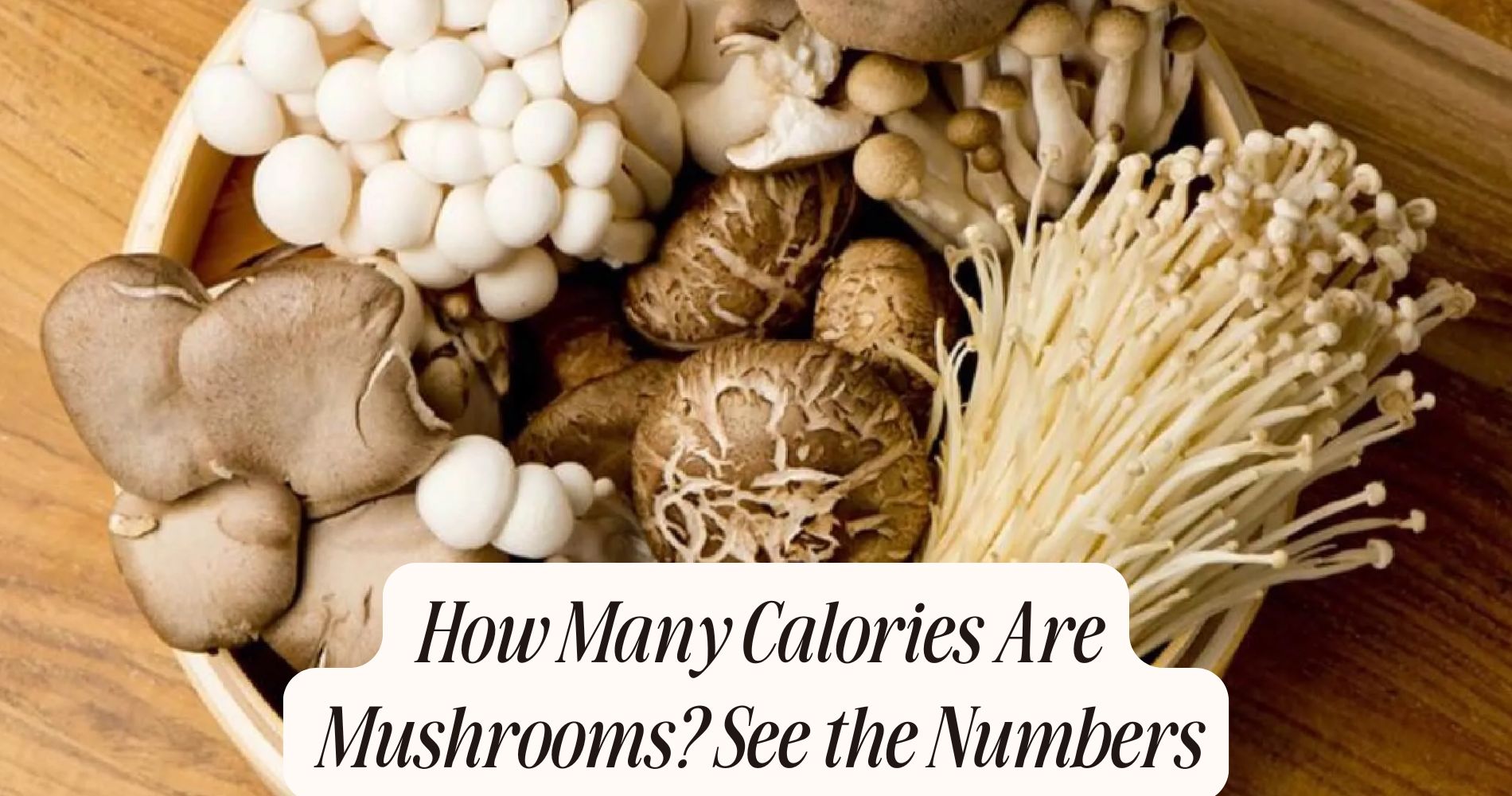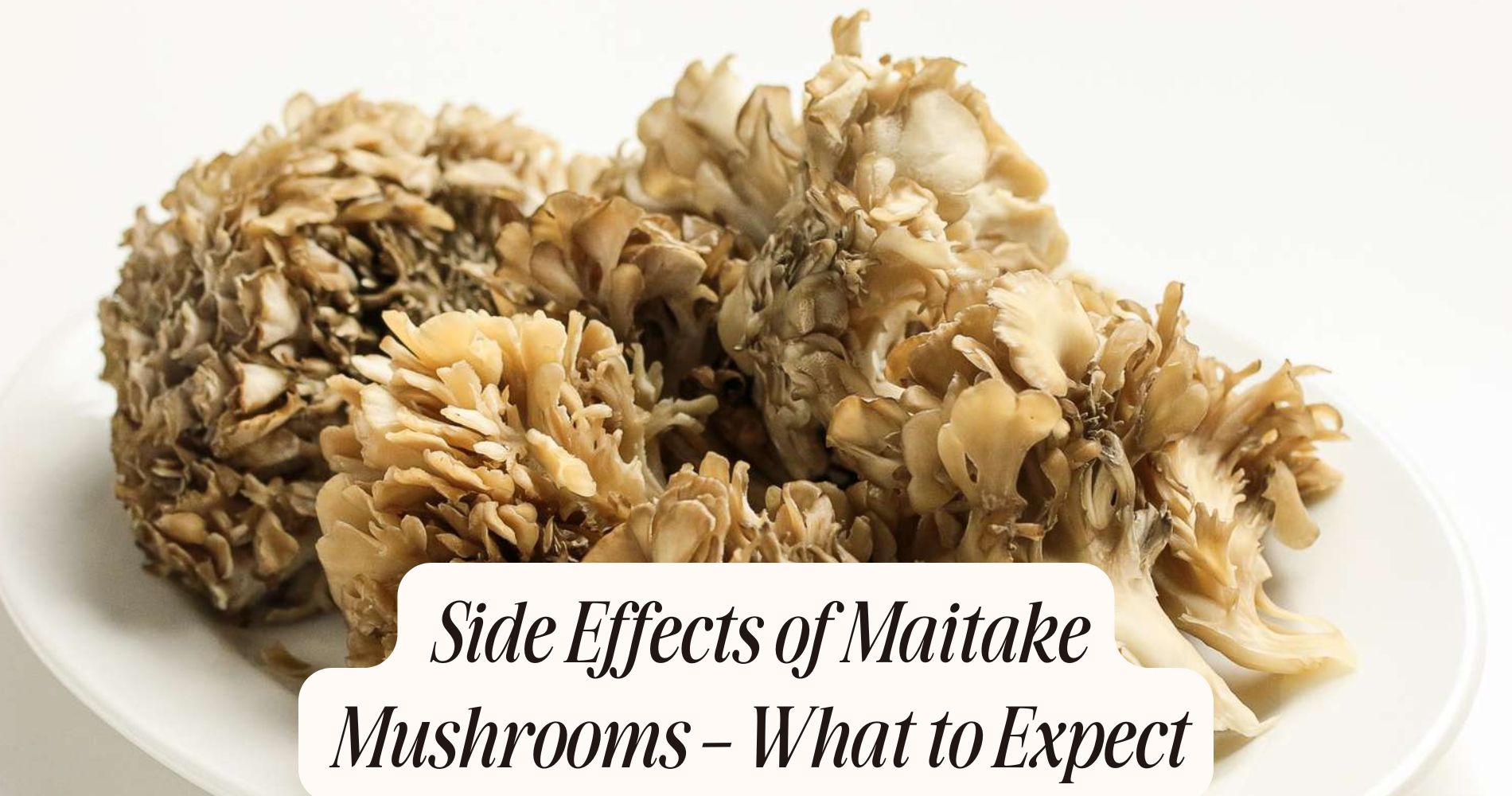
How Many Calories Are Mushrooms? See the Numbers
How many calories are mushrooms? You’ll be glad to know most fresh mushrooms are extremely low in calories—typically 15 to 34 calories per 100 grams, depending on the variety. For example, button mushrooms have about 22 calories per 100 grams, while portobello mushrooms offer around 19 per 84-gram cap. Even flavorful shiitakes have only about 34 calories per cup. These nutrient-packed fungi are ideal for healthy, calorie-conscious meals. Curious how different types compare or their added health benefits? There’s more ahead.
Calories in Common Mushroom Varieties
When you compare different types of mushrooms, you'll find that most varieties are naturally low in calories while offering valuable nutrients. Whether you're interested in white, cremini, shiitake, or portobello mushrooms, each of these culinary mushroom varieties typically provides just 15 to 30 calories per 100-gram serving.
This makes them an excellent choice if you want to add bulk and flavor to meals without increasing your calorie intake. During mushroom harvesting, these fungi retain their nutrient density, supplying you with fiber, B vitamins, selenium, and antioxidants.

Including a range of culinary mushroom varieties in your diet supports a nutrient-rich, calorie-conscious approach to eating. By understanding the nutritional value of different mushrooms, you can make informed decisions when preparing healthy, flavorful dishes.
Button Mushrooms: Serving Size and Calorie Content
A standard serving size of button mushrooms is about 100 grams, which provides roughly 22 calories. You'll find that button mushrooms are incredibly low in calories, making them a smart addition to any meal plan.
Thanks to modern mushroom cultivation techniques, you can easily access fresh, nutrient-rich button mushrooms year-round. These mushrooms offer small but valuable amounts of protein, fiber, B vitamins, and minerals like selenium and copper.
When you choose mushrooms harvested at their peak, you maximize both flavor and nutritional benefits.
Because of their low energy density, you can enjoy a generous portion without worrying about calorie overload.
Consistent mushroom harvesting practices ensure that you get a safe, high-quality product every time.
Portobello Mushrooms: Nutritional Breakdown
Although portobello mushrooms are best known for their meaty texture and rich flavor, they also offer a robust nutritional profile. In a single, raw portobello mushroom (about 84 grams), you’ll find roughly 19 calories, making them a low-calorie addition to your meals.
Portobellos are cultivated with care, and their mushroom cultivation process guarantees a clean, nutrient-dense product. They’re rich in B vitamins—especially riboflavin and niacin—and provide essential minerals like potassium, phosphorus, and a small amount of iron.

Their fiber content supports healthy digestion, while antioxidants help combat cellular damage. Because portobello mushrooms are low in fat and cholesterol, they fit easily into balanced diets.
Eating them cooked or raw also enhances nutrient absorption, allowing your body to capture these benefits efficiently.
Shiitake Mushrooms: How Many Calories?
One cup of raw shiitake mushrooms (about 97 grams) contains approximately 34 calories, making them a smart choice if you're watching your caloric intake.
Shiitake mushrooms are well-known in mushroom cultivation for their robust, earthy flavor profiles, which can elevate a variety of dishes without adding significant calories.
Beyond their low calorie count, shiitakes provide essential nutrients such as fiber, B vitamins, copper, and selenium.
Including these mushrooms in your meals contributes to a nutrient-dense diet that supports your overall health.

Research suggests shiitakes may also contain compounds that help support immune function.
Whether you sauté, roast, or add them to soups, you'll benefit from their rich flavor and nutrition.
You can enjoy their unique taste while keeping your calorie count in check.
Cremini Mushrooms: Calorie Information
Cremini mushrooms offer a low-calorie option for anyone looking to enrich their meals without adding extra energy. With just about 15 calories per 100 grams, you can incorporate them freely into your diet.
Cremini mushrooms, often called “baby bellas,” provide a deeper, earthier mushroom flavor profile compared to white mushrooms. This makes them ideal for dishes where you want more robust taste without extra calories.
Their nutritional value extends beyond calories—they provide fiber, B vitamins, and minerals like selenium. Modern farming practices aim to preserve these nutrients by harvesting at peak freshness and minimizing pesticide use.
When you choose cremini mushrooms, you’re not just getting great flavor; you’re also opting for a nutritious, low-calorie ingredient that fits a variety of healthy eating plans.
Comparing Fresh vs. Cooked Mushrooms
You’ve seen how cremini mushrooms bring both flavor and nutrition with minimal calories, but it’s also important to contemplate how preparing mushrooms can affect their calorie content and nutrients. When you eat mushrooms fresh, you’re getting the purest form—low in calories and rich in vitamins and minerals.
However, different cooking methods change things slightly. Sautéing or frying mushrooms in oil increases their calorie content due to added fats. Steaming or grilling, by contrast, keeps calories low and preserves most nutrients.
Cooking can also enhance flavor profiles by making mushrooms more savory and aromatic. While heat may reduce some water-soluble vitamins, it can also make certain minerals and antioxidants more available.
Health Benefits Beyond Calories
Although mushrooms are celebrated for their low calorie count, their health benefits extend far beyond energy content. When you include mushrooms in your routine, you're giving your body a boost of essential nutrients. They're rich in B vitamins, selenium, and copper, all crucial for energy metabolism and healthy cells.

Mushroom antioxidants, such as ergothioneine and glutathione, help protect your cells from oxidative stress and may lower your risk for chronic diseases. These compounds are unique to mushrooms and aren’t found in significant amounts in many other foods.
Additionally, mushrooms support your immune system. They provide beta-glucans, which can help regulate immune responses and improve your body’s defense against illness. With these benefits, mushrooms offer much more than just a low-calorie option.
Tips for Adding Mushrooms to a Low-Calorie Diet
Building on these impressive health benefits, mushrooms are also easy to incorporate into a low-calorie eating plan. Since mushrooms are naturally low in calories but rich in nutrients, you can use them to add volume and flavor to meals without adding excess calories.
Explore different mushroom flavor profiles—white button mushrooms offer a mild taste, while shiitake and portobello bring earthier, umami-rich notes. Use culinary pairing tips to maximize taste and nutrition: swap half the ground meat in burgers or tacos with finely chopped mushrooms, or roast them alongside vegetables for extra texture.
Add them to salads, stir-fries, or omelets to boost fiber and micronutrients. By experimenting with mushroom varieties, you’ll keep your meals satisfying and support your low-calorie goals.
Low-Calorie, High-Benefit: SUPER MUSHROOM GUMMIES
Looking for a low-calorie way to enjoy the power of mushrooms? Try Well Gummies' SUPER MUSHROOM GUMMIES! These convenient, chewable gummies pack the benefits of 10 functional mushrooms into one delicious wild berry-flavored bite—without the extra calories. Fuel your brain, boost your energy, and support your immune system naturally, all while enjoying a taste as satisfying as your favorite candy. Plus, no jitters or crash—just calmer energy and sharper focus to keep you shining all day. Stay balanced with Well Gummies!
Frequently Asked Questions
Are Mushrooms a Good Source of Protein?
You might think mushrooms are a great protein source, but in nutritional comparison, they offer less protein than most vegetarian alternatives like beans or tofu. Still, they're nutrient-dense and can complement your protein intake in a balanced diet.
Do Mushrooms Contain Any Allergens?
You might not realize it, but mushroom allergy is rare among edible mushroom varieties. Most people can eat them safely, though a few may experience allergic reactions. Always consult your doctor if you suspect sensitivity to mushrooms.
Can Mushrooms Help With Weight Loss?
You can benefit from adding mushrooms to your diet for weight loss since they’re low in calories compared to many foods. Their nutritional benefits—like fiber and vitamins—support overall health, making them a smart calorie comparison choice.
How Should Mushrooms Be Stored for Freshness?
To maximize mushroom freshness, use smart storage tips: keep them unwashed in a paper bag in your fridge. This prevents moisture buildup, preserves nutrients, and helps with freshness preservation, according to food scientists and nutrition experts.
Are There Poisonous Mushrooms That Look Like Edible Ones?
You should know that some poisonous varieties closely resemble edible mushrooms. Always use expert identification tips, like checking spore prints and habitat, to avoid accidental poisoning. Don't rely on appearance alone, as nutrient-rich mushrooms have dangerous lookalikes.
Conclusion
When you add mushrooms to your meals, you’re getting a nutrient-dense, low-calorie boost. Most varieties, like button, portobello, shiitake, and cremini, have just 15 to 30 calories per serving, so you won’t tip the scales. Plus, they offer fiber, vitamins, and antioxidants. Whether you eat them fresh or cooked, mushrooms fit easily into a balanced, low-calorie diet—helping you stay full and nourished without adding unnecessary calories. Give them a try!




